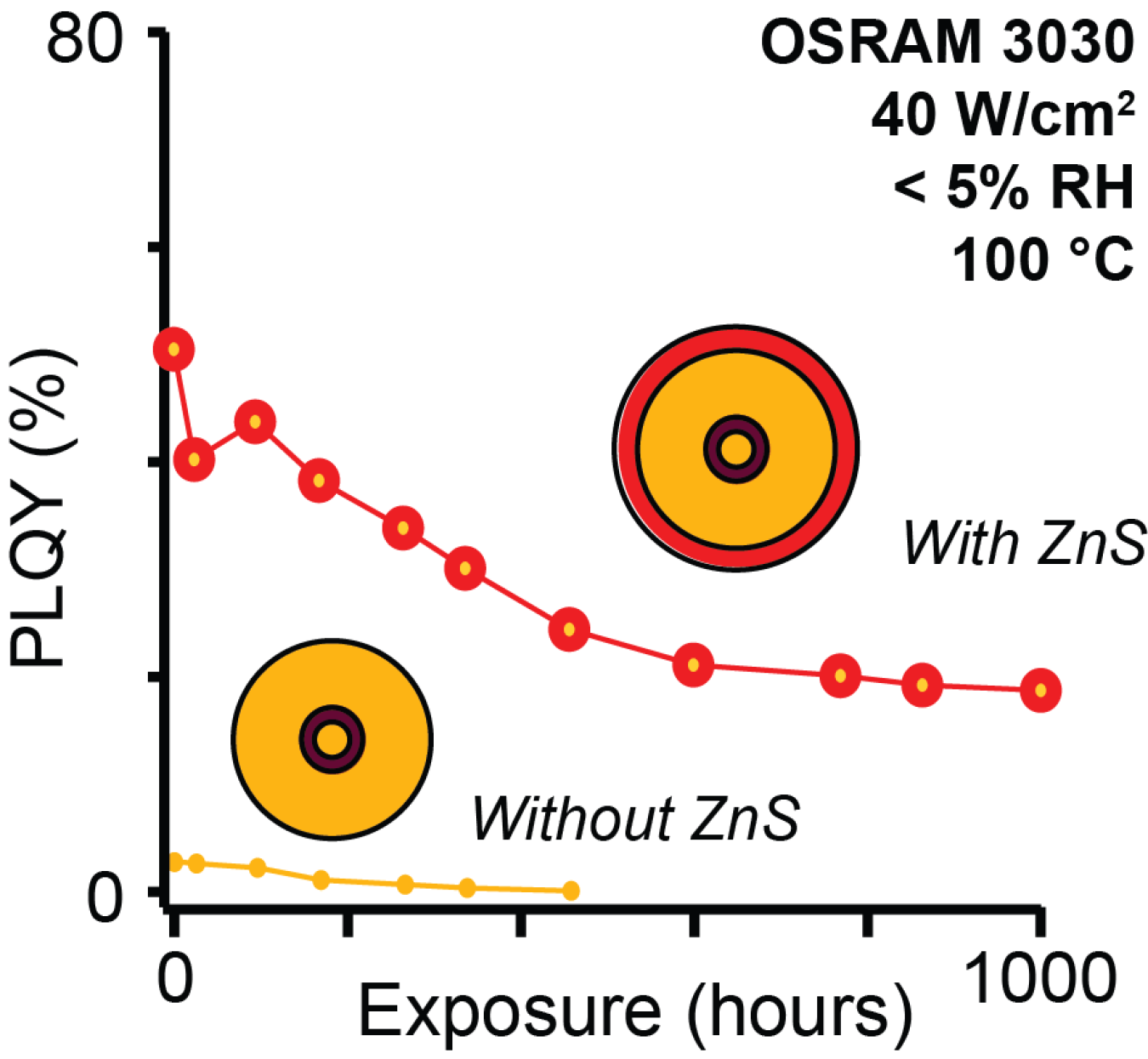
Spherical quantum well CdS/CdSe/CdS quantum dots with ZnS shells under accelerated aging conditions outperformed quantum dots without the protective ZnS layer.
The process of down-conversion by phosphors has allowed the development of white-emitting LEDs, because for most white-LED systems, the LED emits blue photons, most of which are converted to green-yellow and red by a layer of phosphors that typically rests on top of the LED, with the resulting color mix perceived by the human eye as white. This process, by which photons are converted from more-energetic colors to less-energetic colors, is known as down-conversion. And while down-conversion phosphors have progressed considerably over the past decade, they still need significant improvements.
That’s especially true for red phosphors, which could benefit from being less thermally sensitive and having a narrower spectral width to better match the eye response. Quantum dots have promise as alternative down-conversion materials, due to their inherent wavelength tunability and narrow line width. Colloidal quantum dots (nanometer-scale semiconductor crystallites) can produce narrow-band red emission that improves the efficacy of warm-white LED lighting packages by more than 25%. The challenge is to develop high-efficiency quantum dots with excellent environmental stability.
With the help of DOE funding, researchers at Columbia University, OSRAM Opto Semiconductors, and Lawrence Berkeley National Laboratory have developed a new process to synthesize red-emitting quantum dots in a single-step manufacturing process. These materials achieve efficient red emission on LED lighting packages that achieve state-of-the-art reliabilities under the harsh conditions necessary for commercial adaptation.
The team developed novel synthetic methods that build on a library of synthesis reagents based on a thiourea and selenourea core, whose reactivities can be tuned to the desired architecture. High-throughput robotics were used to search synthesis conditions to identify optimal architectures with high-photoluminescence quantum yields (90%). When tested on OSRAM LED lighting packages, the quantum dots achieved excellent long-term reliability under accelerated aging conditions. The results also illustrate the importance of the quantum dot surface structure to performance and long-term stability. (September 2019)
Return to Research Highlights.

